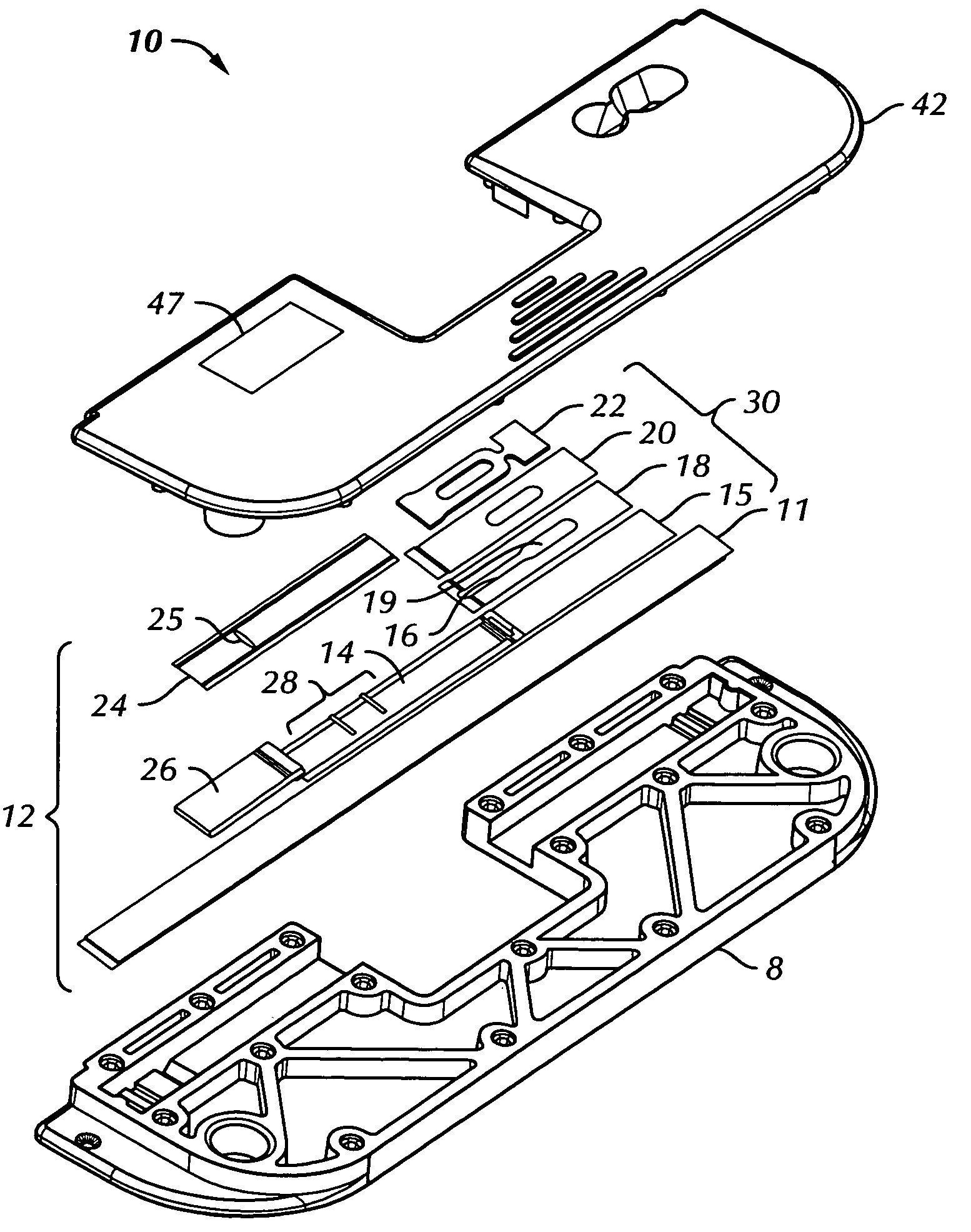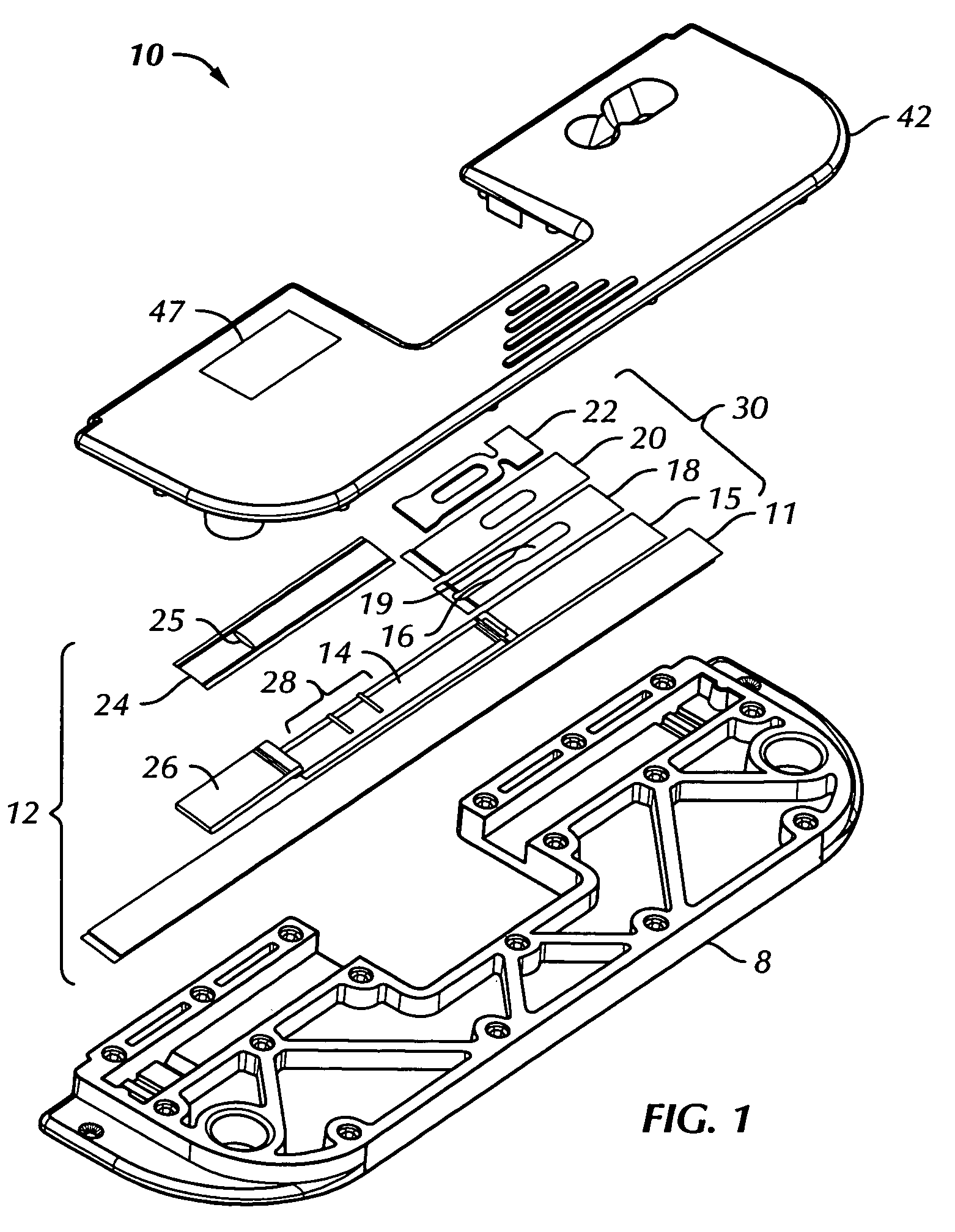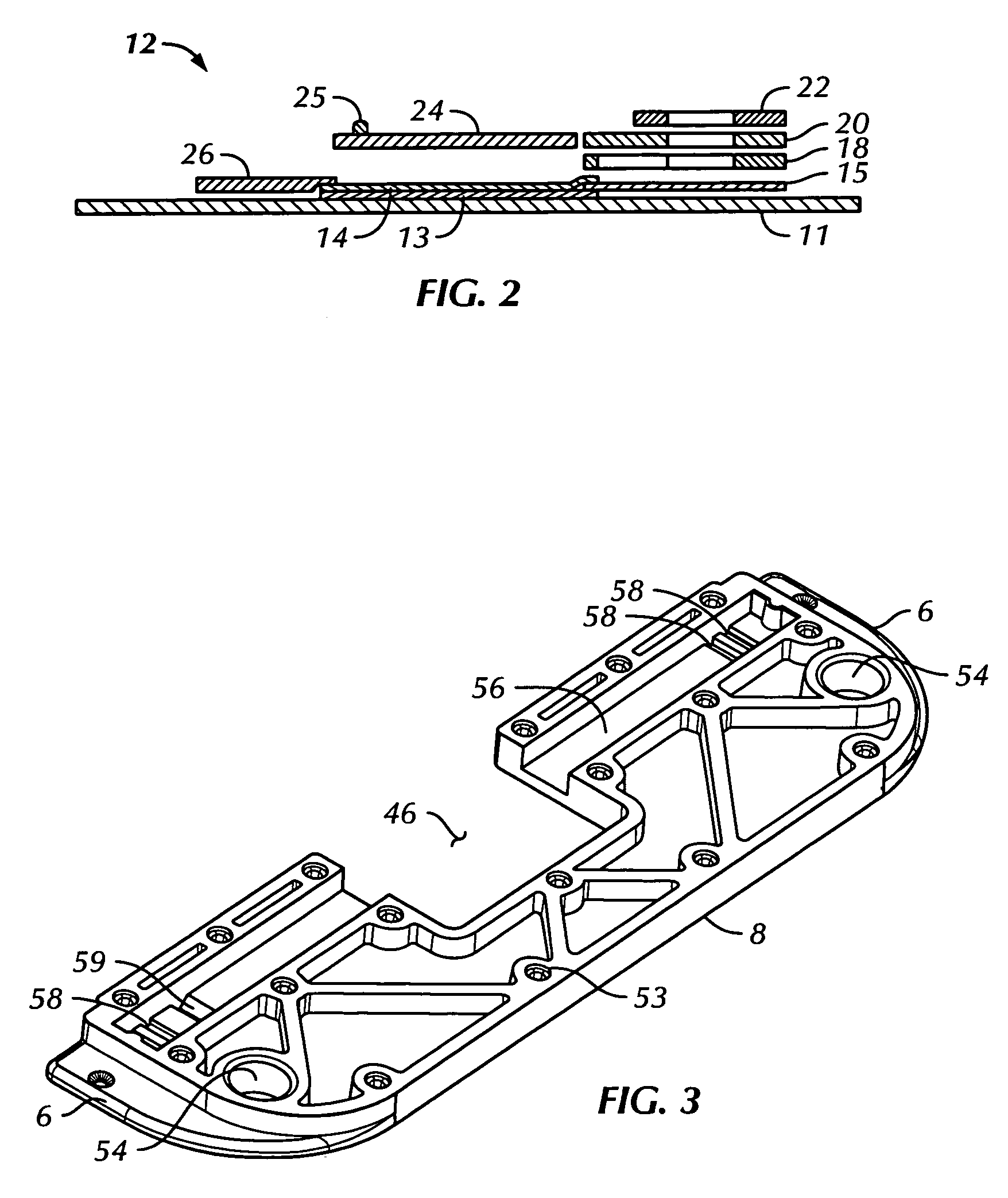Directed-flow assay device
a technology of directed flow and assay device, which is applied in the direction of positive displacement liquid engine, laboratory glassware, instruments, etc., can solve the problems of clogging the pores of blood cells, affecting the detection accuracy of labeling reagents, etc., to achieve the effect of improving the sensitivity over known lateral flow device, rapid and superior time stability
- Summary
- Abstract
- Description
- Claims
- Application Information
AI Technical Summary
Benefits of technology
Problems solved by technology
Method used
Image
Examples
Embodiment Construction
[0038]In the following description of preferred embodiments, reference is made to the accompanying drawings, which form a part hereof, and which show by way of illustration, specific embodiments of the invention. It is to be understood by those of working skill in this technological field that other embodiments may be utilized, and structural, as well as procedural changes may be made without departing from the scope of the present invention.
[0039]With reference now to FIGS. 1 to 5, directed flow assay device 10 in accordance with the present invention comprises immunoassay test strip 12, which has porous analytical membrane 14 mounted adjacent to and generally parallel with support member 11. Adhesive layer 13 (FIG. 2) anchors analytical membrane 14 to support member 11. The analytical membrane has a first end and a second end.
[0040]Superparamagnetic particles (not shown) may be present in the sample preparation outside the device. These particles are configured to bind with the ta...
PUM
| Property | Measurement | Unit |
|---|---|---|
| hydrophilic | aaaaa | aaaaa |
| optically non-transparent | aaaaa | aaaaa |
| magnetic calibration | aaaaa | aaaaa |
Abstract
Description
Claims
Application Information
 Login to View More
Login to View More - R&D
- Intellectual Property
- Life Sciences
- Materials
- Tech Scout
- Unparalleled Data Quality
- Higher Quality Content
- 60% Fewer Hallucinations
Browse by: Latest US Patents, China's latest patents, Technical Efficacy Thesaurus, Application Domain, Technology Topic, Popular Technical Reports.
© 2025 PatSnap. All rights reserved.Legal|Privacy policy|Modern Slavery Act Transparency Statement|Sitemap|About US| Contact US: help@patsnap.com



